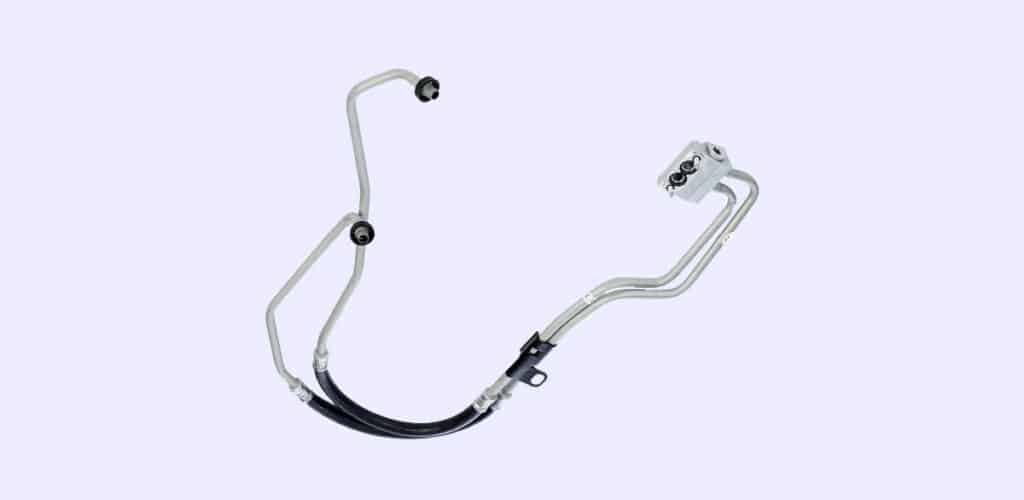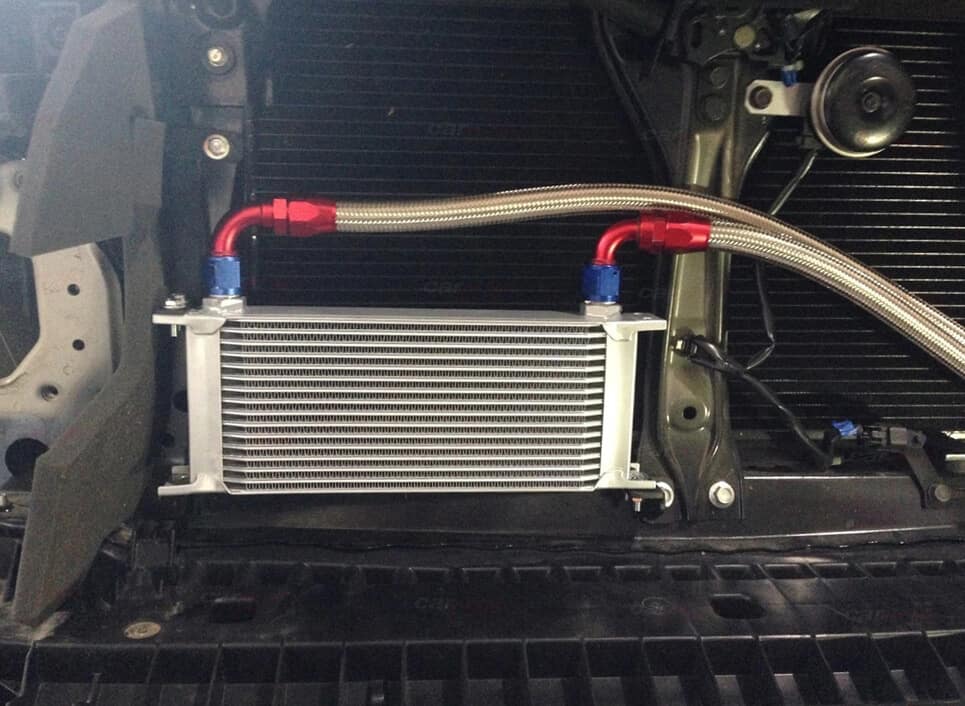When it comes to your car’s engine, keeping the oil at the right temperature is crucial to maintaining its longevity and performance. The oil cooler lines play an important role in regulating the oil temperature and ensuring that it flows smoothly through the engine. In this guide, we will provide information about oil cooler lines, their replacement cost, and tips for keeping them in good condition.
What are Oil Cooler Lines?
Oil cooler lines are the tubes or hoses that run between the oil cooler and the engine block. They are responsible for transporting oil from the engine to the cooler and then back to the engine. The oil cooler is typically located near the radiator, and its purpose is to regulate the temperature of the engine oil to prevent it from overheating.

How Much Will it Cost to Replace Oil Cooler Lines in Canada?
The cost of replacing oil cooler lines in Canada can vary depending on the make and model of your vehicle, the type of oil cooler lines needed, and the mechanic’s labor rates. On average, the cost of replacing oil cooler lines in Canada can range from $200 to $600 for parts and labor.
What are the Symptoms of Faulty Oil Cooler Lines?
The symptoms of faulty oil cooler lines can vary, but some common signs include:
1. Oil leaks: Damaged or cracked oil cooler lines can result in visible oil leaks underneath the vehicle, particularly near the front of the engine or around the radiator.
2. Overheating engine: If the oil cooler lines are not functioning properly, the engine oil may not be cooled efficiently, leading to increased engine temperatures and potential overheating.
3. Low oil pressure: Leaks or blockages in the oil cooler lines can cause reduced oil pressure, which can trigger a low oil pressure warning light or cause poor engine performance.
4. Burning oil smell: Leaking oil from faulty oil cooler lines may come into contact with hot engine components, creating a burning oil smell under the hood.
5. Oil in the coolant: A damaged oil cooler line may allow oil to mix with the engine coolant, which can lead to contamination and a milky or frothy appearance in the coolant reservoir.
6. Coolant in the oil: Similarly, a damaged oil cooler line can also cause coolant to enter the engine oil system, leading to a milky or frothy appearance on the oil dipstick or under the oil filler cap.
7. Poor engine performance: If faulty oil cooler lines cause reduced oil flow or pressure, the engine may not be properly lubricated, leading to decreased performance, increased wear, and potential damage.
How Long Do Oil Cooler Lines Last?
Oil cooler lines typically last for the lifetime of the vehicle. However, they can become damaged or worn over time due to exposure to heat, vibration, and other environmental factors.
How Do Oil Cooler Lines Become Defective?
Oil cooler lines can become defective due to a variety of factors:
1. Age and wear: Over time, oil cooler lines may degrade and weaken, leading to cracks, leaks, or ruptures.
2. Corrosion: Exposure to moisture, road salt, and other corrosive elements can cause the metal parts of oil cooler lines to corrode and weaken, making them more susceptible to failure.
3. Vibration and stress: Constant vibration and stress from the engine and road conditions can cause oil cooler lines to wear out, crack, or develop leaks.
4. Heat exposure: High temperatures from the engine and exhaust system can cause the rubber or plastic components of oil cooler lines to become brittle and break down over time.
5. Poor quality or improper installation: Low-quality materials or improper installation of oil cooler lines can lead to premature failure or leaks.
6. Damage from road debris: Oil cooler lines can be damaged by road debris, such as rocks, or by impacts from potholes or curbs.
7. Contaminated oil: Contaminated engine oil can cause deposits to build up within the oil cooler lines, potentially leading to blockages or restricted flow, which in turn can cause the lines to fail.
How Can Faulty Oil Cooler Lines Affect Other Systems in the Car?
• Engine overheating: Faulty oil cooler lines can lead to insufficient cooling of engine oil, causing the engine to overheat and potentially damage internal components.
• Engine damage: Prolonged overheating due to faulty oil cooler lines can cause severe damage, such as warped or cracked cylinder heads, blown head gaskets, and even complete engine failure.
• Fire hazard: Leaking oil from damaged cooler lines can create a fire hazard if it comes into contact with hot engine parts or the exhaust system.
• Transmission issues: If your vehicle has an integrated transmission cooler, faulty oil cooler lines can also lead to transmission overheating and damage.
• Environmental impact: Leaking oil can contaminate the environment and may lead to fines or penalties for violating environmental regulations.
• Increased repair costs: The longer faulty oil cooler lines are left unaddressed, the more damage they can cause to the engine and other components, leading to costly repairs.
Is it Safe to Drive with Faulty Oil Cooler Lines?
Driving with faulty oil cooler lines can be unsafe and cause significant damage to your vehicle’s engine. The oil cooler lines play a critical role in maintaining the proper operating temperature of the engine by transporting oil to the oil cooler, which dissipates excess heat. If these lines are damaged, leaking, or not functioning correctly, it can lead to insufficient cooling of the engine oil, causing the engine to overheat.
Continuing to drive with faulty oil cooler lines can lead to severe engine damage, including warped or cracked cylinder heads, blown head gaskets, and even complete engine failure. Overheating can also cause damage to other engine components, leading to costly repairs. Furthermore, leaking oil can create a fire hazard if it comes into contact with hot engine parts or the exhaust system. It is essential to address any issues with your oil cooler lines as soon as they are detected to ensure the safety and longevity of your vehicle. If you suspect a problem with your oil cooler lines, it’s best to have your vehicle inspected by a professional mechanic and repair any issues promptly.
How Can I Make My Oil Cooler Lines Last Longer?
• Regular maintenance and inspections can help to identify and address potential issues before they become major problems
• Check the oil cooler lines for leaks or damage regularly
• Replace worn or damaged oil cooler lines immediately
• Flush the engine oil and replace it regularly
• Avoid driving on rough terrain or over potholes
• Avoid excessive idling and stop-and-go driving

Conclusion: Oil Cooler Line Replacement
The oil cooler lines are an important part of your car’s engine system, and it is important to keep them in good condition to ensure optimal performance and longevity. If you notice any symptoms of faulty oil cooler lines, it is important to have them inspected and replaced as soon as possible. By following the tips for maintenance and care outlined in this guide, you can help to keep your oil cooler lines in good working order for years to come.
Next Steps
Book Your Oil Cooler Line Replacement Service
The service most frequently booked by those who read this article is Oil Cooler Line Replacement. Uchanics’ expert technicians make the process even more convenient by bringing the service right to your doorstep. We perform this job at your home or office, covering over 40 cities in Ontario, including Toronto, Mississauga, Brampton, Oshawa, Ajax, Scarborough, and more. Our commitment to excellence has earned us more than 700 glowing 5-star reviews. Choose Uchanics for your Oil Cooler Line Replacement and experience unparalleled convenience and top-quality service.
